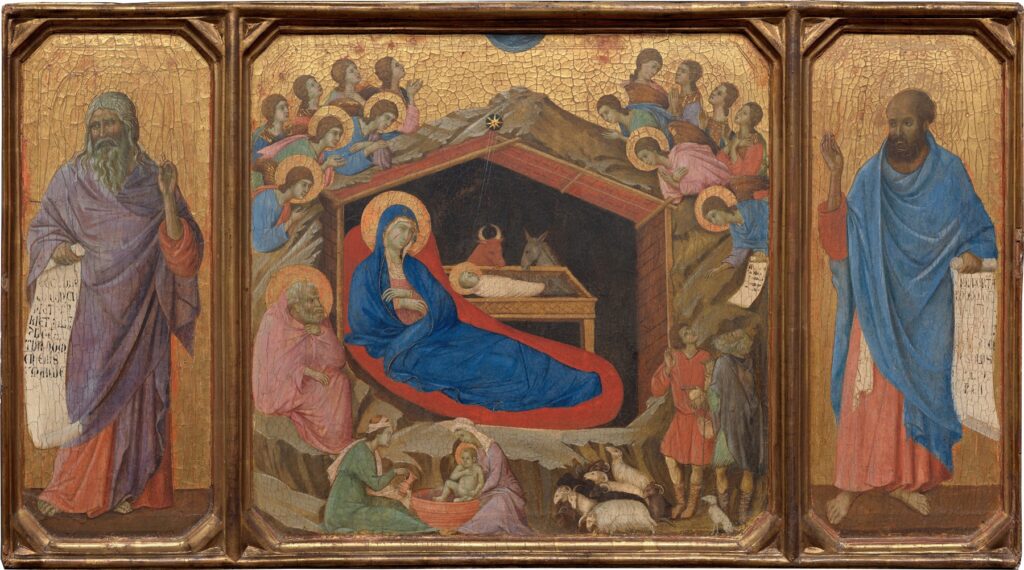While most Catholics are familiar with the expression ‘virgin birth’, more often than not, they do not know what it means. For most of them, it refers to the virginal conception, not the virginal birth, of Jesus. When the expression is used without explanation, it often leads one to imagine that, if there was anything miraculous about the birth of Christ, it was that it was painless for Mary. In my own youth, I imagined Our Lady giving birth like all other mothers, but without suffering any pain. The miraculous character of the virgin birth was, in my young mind, that even though she gave birth naturally, it did not hurt. Without realising it, I was a young heretic!
It was only later that the authentic nature of the virgin birth dawned on me. The Fathers of the Church compare the birth of Christ to the manner in which the rays of the sun penetrate a window, the way Christ Himself left the tomb on Easter Sunday morning or entered the Cenacle later that day without opening the door. Ever since I realised the true meaning of the virgin birth, I have been eager to share it with others. It provokes one of two jaw-dropping reactions: either wondrous awe at the marvel, or incredulous resistance. Why insist that Mary’s virginity remained intact in the very act of giving birth? Quite simply, God Himself has revealed it to us. If God has taken the trouble, it must be important for us to know.
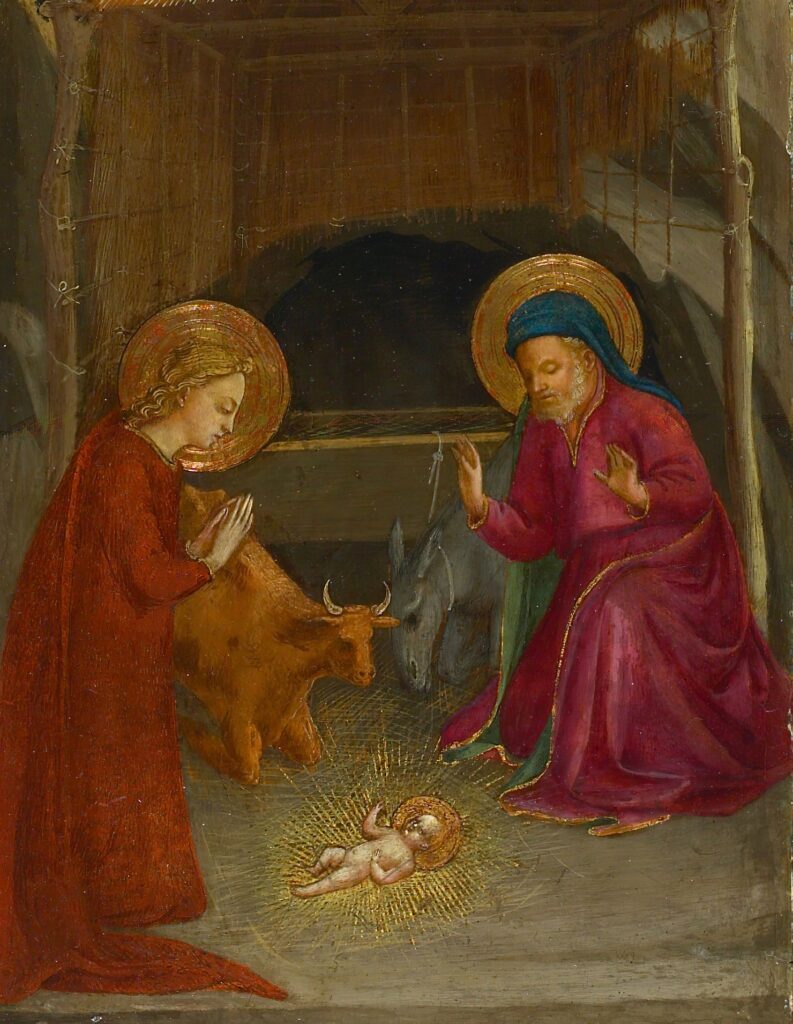
A Triple Dogma
In the treatment of the virginity of Mary, Catholic dogma leaves nothing to chance. Our holy Mother the Church teaches us that Mary was a virgin ante partum (before giving birth to Jesus), post partum (after giving birth to Jesus), and in partu (in the very act of giving birth to Jesus).
Ante partum – We believe that Mary was a virgin before the birth of Jesus. This means that she conceived in a virginal manner by the power of the Holy Spirit just as the evangelists tell us (cf. Mt 1:18 and Lk 1:35). Whereas other women have to lose their virginity in order to become mothers, Our Lady has the unique privilege of conceiving miraculously without intercourse.
Post partum – We believe that after the birth of Jesus, Mary remained a virgin until the end of her life. In other words, she never had carnal relations with Joseph or with any other man, and never had any other children in the flesh. This point of the dogma opposes those who, due to an inexact reading of certain verses of the Gospels, believe that Jesus had blood brothers and sisters. It is the common error of many Protestants to think that when the Gospels speak of the ‘brothers’ and ‘sisters’ of Jesus, they are referring to His siblings. In reality, Jesus had no siblings, because it would not have been becoming at all, indeed it would have been shocking to think that the Virgin Mother of God, who had conceived and given birth miraculously, would then unite with a man and give birth in the natural way. Furthermore, as has been demonstrated by exegetes, the Hebrews used the words ‘brother’ and ‘sister’ to mean loosely any close relatives, such as cousins and even aunts and uncles.
In partu – The dogma, however, goes further. We believe that Mary remained a virgin even in the very act of giving birth to Jesus. Here we have a much greater miracle. For most people, it is easy to accept that since Jesus is God’s Son and has no earthly father, it is fitting that God would perform a miracle so that Mary could conceive without a man being involved. When it comes to the birth, however, we frequently encounter opposition. ‘Do you mean the baby just came out, like through her uterus and skin, just like that? That’s extraordinary!’ Yes, it is, and it is precisely what the Fathers believed about the birth of Christ. It is what the Church teaches about the birth of Christ. It is the miracle of the virgin birth, unique in history, which the liturgy chants on Christmas night: Blessed is Mary the Mother of God; today she gave birth to the Saviour of the world, while her womb remained intact.1
Sceptics in every age have refused to believe the dogma. In one sense, we are at a disadvantage, since there were no eyewitnesses to the miraculous birth other than Mary and Joseph, and neither of them has left any written account. And yet, we do have a significant scriptural clue from the event itself, namely that ‘she wrapped him in swaddling clothes and laid him in a manger’ (Lk 2:7). Ordinarily, a woman who has just given birth is not the one to clothe her babe. Others do this for her and then bring the child to her. Not so here. Mary herself performs this duty, not because Joseph was unable to, but because the birth was not only painless, it was miraculous. Ultimately, however, this is one of those points of dogma handed down by Tradition (with a capital T). Our Lady herself must have made this point clear to the apostles, and it has been transmitted from generation to generation from the very beginning of the Church. This is why, when certain heretics made bold to question it, they were immediately silenced by the Fathers.2
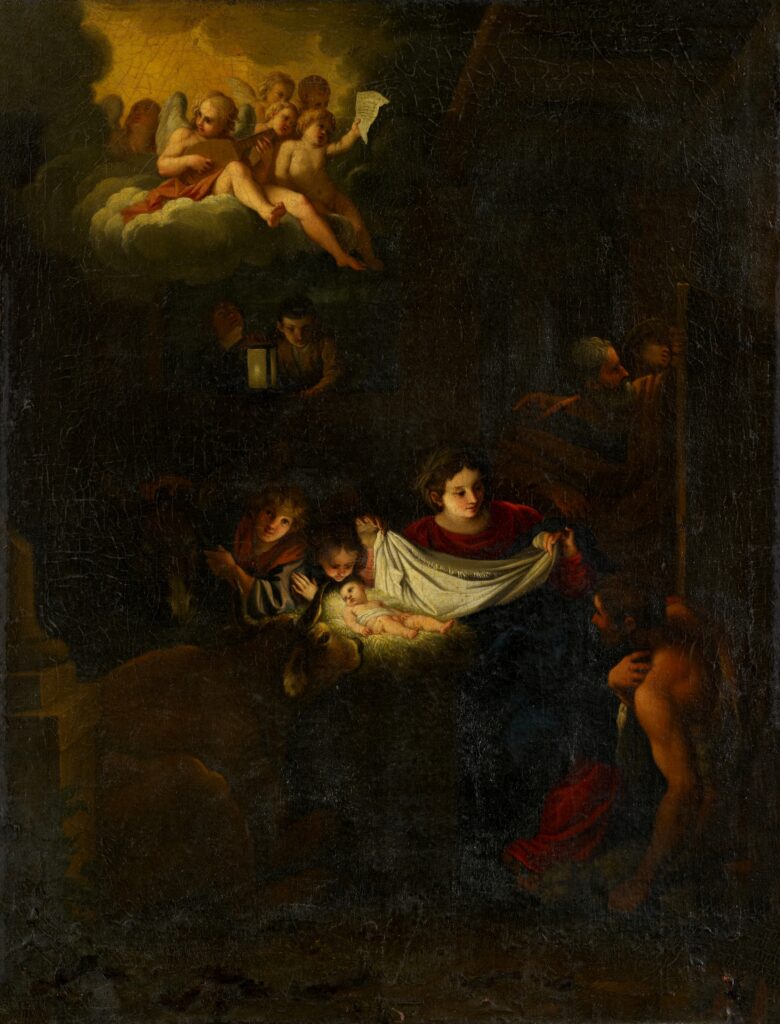
Mystery Foretold
As would be expected, the event had been prophesied in Old Testament passages whose meaning, though veiled, becomes readily understandable in hindsight. The first is the episode of the burning bush. ‘The angel of the Lord appeared to Moses in a flame of fire out of the midst of a bush. He looked, and behold, the bush was burning, yet it was not consumed. And Moses said, “I will turn aside to see this great sight, why the bush is not burned” (Ex 3:2-3). The bush through which God revealed Himself to Moses was on fire and yet was not consumed by the fire. The Fathers tell us that, allegorically, the text refers to the divinity that was hypostatically united with the humanity of Christ in the incarnation, without the humanity being dissolved or ‘melted’ into the divinity.3 By extension, however, it refers to the virginal body of Mary, which, although penetrated by God’s presence and made capable of giving birth, retains its full integrity. She is not burned by the fire of concupiscence, nor is her virginal flesh deflowered by the birth, but passes through the miraculous event perfectly unscathed. And so, the Church sings on the octave of Christmas: ‘In the bush which Moses saw unconsumed, we acknowledge the preservation of thy glorious virginity’.4
The second text is the well-known prophecy of Isaiah: ‘Behold a virgin shall conceive and bring forth a son, and his name shall be called Emmanuel’ (Is 7:14). The text clearly states that not only will a virgin conceive, but also that a virgin will give birth. In other words, she is a virgin both in conceiving and in giving birth. Here we have the most succinct scriptural reference to the distinction between virginal conception and virginal birth.5
The third text is given to us by the prophet Ezekiel: ‘This gate shall remain shut; it shall not be opened, and no one shall enter by it, for the Lord, the God of Israel, has entered by it. Therefore, it shall remain shut. Only the prince may sit in it’ (Ez 44:2-3). This mysterious gate remains shut, and yet clearly God has passed through it, and the prince himself sits there. We have here another veiled reference to the virginal womb of Mary that allows God to pass, but remains closed. Even God, when He passes, does not open it. It is closed to all others, in such a way that had any man dared to attempt to violate that womb, he would have surely been struck dead like Uzzah (cf. 2 Samuel 6:6-7).
A final text from the Old Testament that points in veiled terms to the Virgin Birth is taken from the Song of Songs: ‘A garden locked is my sister, my bride, a spring locked, a fountain sealed’ (Song 4:12). Mary is that locked spring, that sealed fountain, that immaculate virgin that no man can enter, but from whom all graces flow down to us because of the Son who was born miraculously from her without in any way taking away from her bodily integrity.
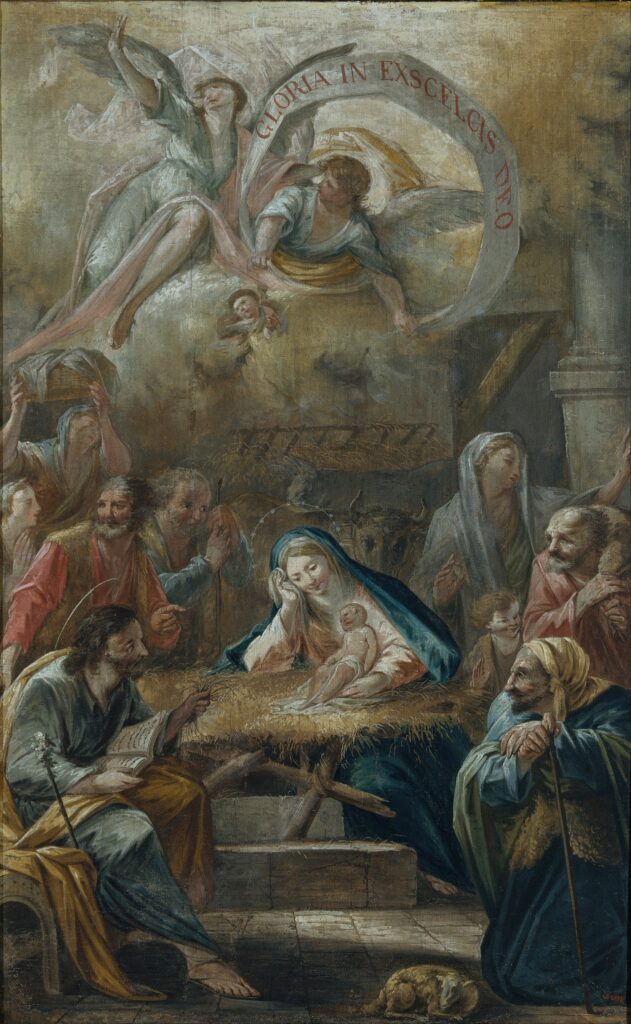
Vast Implications
The truth that has been revealed to us urges us to ask the question: why? Why would God create humans as sexual creatures and then bypass sexuality to be born in a virginal way? Is it that His creation is bad? We know that is not the case. We also know, however, that the sexual drive in man has been corrupted by original sin. Before original sin, humans would have been masters of their sexual instinct, but since then, they easily become its slaves. The unprecedented birth of the Son of God in a virginal way seems to stress that His coming into the world would restore our humanity to its primitive purity. He who came to save sinners from the death of the flesh chose to enter the flesh in a miraculous way that would leave it intact.6
By being born miraculously, Christ already manifested the incorruptible spiritual regeneration of souls unto eternal life through divine adoption, and even inaugurated the world to come, that of the resurrection, both of which flow from the eternal generation of the Word in the bosom of the Father before all ages. This is no doubt why the liturgy sings on Christmas Eve: The Saviour of the world shall arise as the sun: and shall come down into the Virgin’s womb, as the showers upon the grass. And again: When the sun hath risen in the heavens, ye shall see the King of kings proceeding from the Father, as a bridegroom out of his chamber.7
Our Lady’s physical integrity also reminds us that God does not disdain the material order He has created. It is, rather, His intention to preserve, heal and perfect it, to draw it back to Himself in the perfection with which He endowed it at the beginning. Far from being a mere symbol of the soul or its tool, the body shapes and moulds the soul, which is its conjoined form; as a consequence, bodily integrity contributes to spiritual integrity and, thus, to a truly personal integrity.8
Mary is also the prototype of the Church, who is both virgin and mother. When the Church gives birth to souls, she does not lose her integrity, as St Augustine said in a Christmas sermon: ‘Christ, designing to establish virginity in the heart of the Church, first preserved virginity in the body of Mary. When men and women marry, the woman is given to her spouse and she will no longer be a virgin; but the Church could not be a virgin, if the spouse to whom she was given were not the Son of a Virgin.’9
Mary is equally the New Eve. The archangel’s ‘rejoice’ at the Annunciation10 sends us back to the ancient curse, ‘You shall bring forth in sorrow’ (Gn 3:16). Mary’s giving birth in joy and ecstasy as opposed to pain, initiates the new creation which her Son came to bring to the earth and which will only be complete at the end of time.
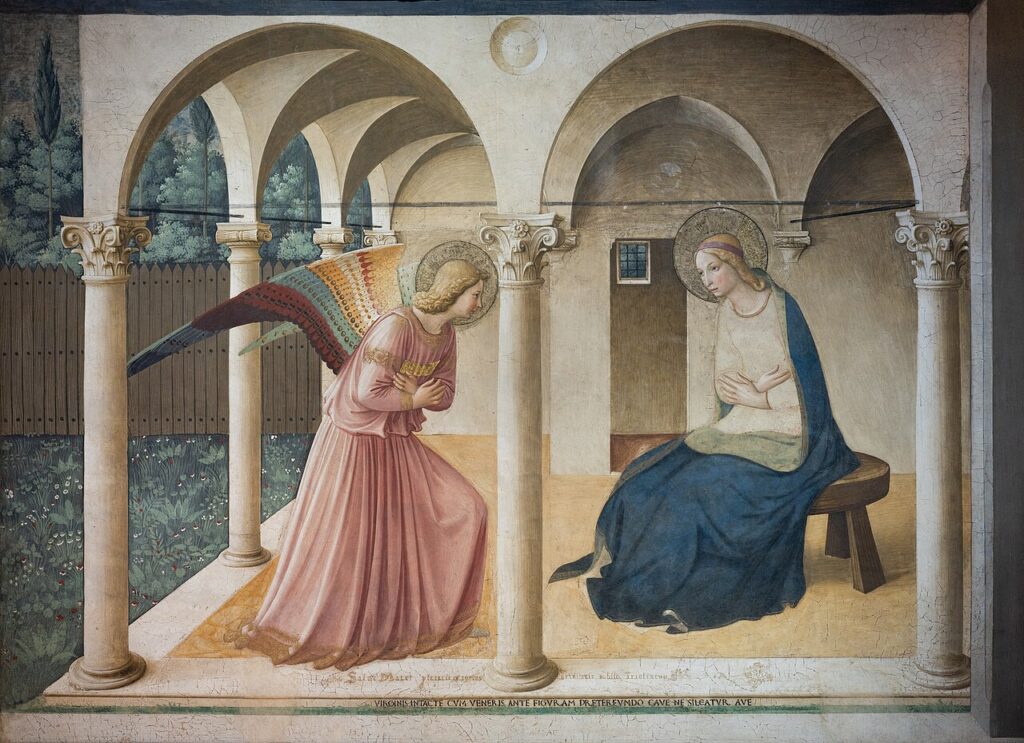
Consecrated Virginity
The preservation of Mary’s virginal integrity has opened an entirely new vista of reflection for the New Testament. While in the Old Testament, the blessings of God were attached to having many children, and sterility was looked upon as a curse, in the New Testament, virginity and voluntary physical barrenness are the privileged positions, which lead to a much greater spiritual fecundity. When a person willingly gives up the pleasures of marriage and the hope of a posterity that will bear his/her name and resemblance, he/she becomes a spiritual father or mother to a number of souls that is known only to God.
While in God’s plan, a young woman is meant to reach marriage with her virginity intact, in the New Covenant, God calls many women to offer their virginity to Christ by vowing their lives to Him. This is an extraordinary incentive for good parents to protect their daughters’ virtue watchfully: it may be that Christ Himself will call her to be His bride, in which case, she will want to be as much like Our Lady as possible.
Today, consecrated virginity or celibacy is often presented from a purely pragmatic point of view: not being married allows a man or woman to give more time to God and neighbour. This is undoubtedly the case, but it is not the most fundamental aspect of celibacy. As St John Henry Newman’s renowned biographer, the late Ian Ker wrote about Newman, who refused to marry in opposition with the Anglican mores in which he was brought up: ‘Newman had already understood that the essence of celibacy as a spiritual ideal as opposed to a pragmatic convenience, was not so much that it provides freedom from the ties of marriage and family for a fuller commitment to the work of a religious profession, but rather that the very pain of the lack of intimate human love is meant to impel the celibate to find affective fulfillment in the exclusive love of God. As a poem he wrote in 1833 puts it, “Thrice bless’d are they, who feel their loneliness”–for “sick at heart, beyond the veil they fly,/Seeking His Presence, who alone can bless”’. Later, after his reception into the Catholic Church, the future Doctor of the Church would write that the virginity of the Gospel ‘is not a state of independence or isolation, or dreary pride, or barren indolence, or crushed affection; man is made for sympathy, for the interchange of love, for self-denial for the sake of another dearer to him than himself. The Virginity of the Christian soul is marriage with Christ.’11
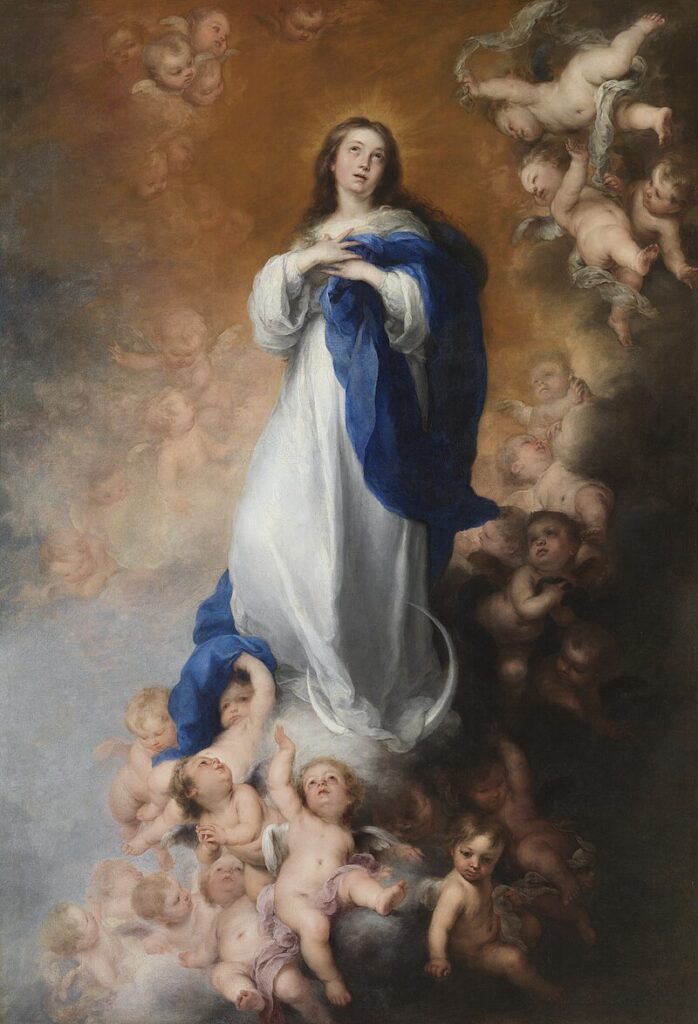
Receptive Emptiness
We can now fully appreciate another fundamental reason for which God wanted Our Lady to remain a virgin in giving birth: she is the ultimate model of the soul whom God wishes to unite with Himself in what can only be called a fecund nuptial union. In eternity, all the elect will take part in this nuptial union, but already here on earth, many souls are called to anticipate the fullness of the gift of self and to love no human being as spouse, reserving that love for God alone.12
Caryll Houselander delicately expressed this in her marvellous little book The Reed of God, in which she compares Our Lady to a hollow reed. As a reed is carved into a flute, so God made Our Lady, playing through her the most exquisite melodies of His love. Virginity is a sort of receptive emptiness, like the flute waiting to be filled with air, the chalice waiting to be filled with wine or the nest waiting to be filled with new life. Mary is the virgin par excellence, and as a loving mother, she wants to help each of us find—or recover—our own emptiness, to unclutter our inner life so that God can fill it entirely with His love.13
‘To find–or recover’: there are some who have had the grace to preserve their virginity and consecrate it to God. There are many more who lost it before they even knew its value. For the latter, too, as with Mary Magdalene, the example of our Blessed Mother and the Virgin Birth offers hope. That hope is the absolute confidence that the divine omnipotence can truly heal the wounded and repair the broken.
Amazingly, this is exactly what God wants to do with us. In the upcoming Advent and Christmas season, may the contemplation of the Virgin Birth inspire us to allow that grace to unclutter our lives, to carve out in our hearts a deep receptiveness, an empty nest that God’s marvellous love can fill when He will, giving us to become like the once empty shell that, now filled to the brim, can overflow and bring the waters of life to many souls.
- Cf. Matins for Christmas night, sixth responsory – Beata Dei Genitrix Maria, cujus viscera intacta permanent, hodie genuit Salvatorem saeculi. This is why those cinematographers are gravely mistaken who, in movies about the life of Christ, portray Our Blessed Lady in the pangs of childbirth. Strictly speaking, this is blasphemy of the worst kind, a grave insult to both Son and Mother. ↩︎
- For example, in the third century, when Jovinian rejected Our Lady’s virginity in partu, a synod in Milan under the authority of St Ambrose condemned his error, referencing the apostles’ creed which proclaims that Christ was born ex Maria Virgine – of the Virgin Mary. Pope St Leo the Great would write in a similar vein in his Tome to Flavian: ‘She brought Him forth without the loss of virginity even as she conceived Him without its loss’ (illum ita salva virginitate edidit, quemadmodum salva virginitate concepit). These and many other patristic witnesses would lead the Fifth Ecumenical Council at Constantinople in 553 to declare Our Lady aeiparthenos – perpetual virgin. ↩︎
- Non commixtionem passus neque divisionem, as solemnly defined at the 4th Ecumenical Council held at Chalcedon in 451. ↩︎
- Rubum quem viderat Moyses incombustum conservatam agnovimus tuam laudabiliem virginitatem…(Third antiphon at Lauds for the feast of the Circumcision). This theme is found in numerous fathers. St Bernard of Clairvaux, for example, mentions it in his second sermon de laudibus Virginis Matris. ↩︎
- Some modern Bibles translate the ‘virgin’ of Is 7:14 as a ‘young woman’. If it is true that the Hebrew word used here refers to a nubile young woman, it is used in the Bible to refer only to untouched marriageable maidens. This is why both the Septuagint translators and St Jerome had no hesitation in using the word parthenos/virgo as the only correct translation. This is precisely the miracle the sacred text refers to, for it would be no sign at all were the woman in question to be an ordinary married woman rather than a virgin. ↩︎
- There is an oration in the Missal for the feast of Our Lady’s Nativity (8 September) that refers to the fact that when Our Saviour was born, He did not diminish but hallowed his Mother’s physical integrity (matris integritatem non minuit sed sacravit). Here we see God’s supreme generosity, who makes sure that when Our Lady offers herself to Him for the work of redemption, He protects her from any loss of the precious gift of her virginity. ↩︎
- Antiphons for the Benedictus and Magnificat on 24 December. ↩︎
- Cf. Mgr William B. Smith, ‘The Theology of the Virginity In Partu and its Consequences for the Church’s Teaching on Chastity,’ Marian Studies: Vol. 31, Article 12 (1980), pp. 109-110. Mgr Smith further writes: ‘It is for this reason that the Church so honors virginity; for this reason, too, virginity adds something over and above a consecrated celibacy which has not preserved virginity. The sacrifice of praise offered to the Creator, the presentation of one’s body as a living, unblemished sacrifice, is an offering distinctive and unique, comparable in the Church’s Tradition to martyrdom. For that reason, virginity stands as the norm for the virtue of chastity–an integrity that is complete in body and soul… After Christ, and because of Him, the living witness to that norm is the ever-Virgin Mary. It has often been said that the Mariological doctrines are the nerve centers for key dogmas of orthodox faith. We must extend that idea so as to include not only orthodoxy, but orthopraxis as well, thereby verifying once again the time-tested refrain to Our Lady–Cunctas haereses interemisti in universo mundo: “You have destroyed all heresies throughout the world.” ’ ↩︎
- St Augustine, Sermon 188 on Christmas Day. ↩︎
- In the Greek text of Lk 1:28, the Archangel greets Mary with the word: Chairé, which means primarily ‘Hail’, but etymologically ‘Rejoice’. ↩︎
- Ian Ker, John Henry Newman, A Biography, Oxford University Press (1998), pp. 132-133. The referenced poem is entitled Melchizedek. It was composed on 5 January 1833, and can be found in John Henry Newman, Verses on Various Occasions, Longmans, Green, and Co. (1896) p. 108. ↩︎
- It would seem that this was the reason for the choice of the Martha-Mary gospel (cf. Lk 10:38-42)in the proper Mass of the Assumption prior to the new formula approved by Pius XII in 1950. The ‘better part’ chosen by Mary was virginity, and this would never be taken away from her. The preservation of Mary’s virginity in the conception/birth of Jesus as well as the preservation of her corporeal integrity in the Assumption are both directly related to her mission to be the Mother of God. ↩︎
- See Caryll Houselander, The Reed of God, ch. 1, passim. ↩︎

